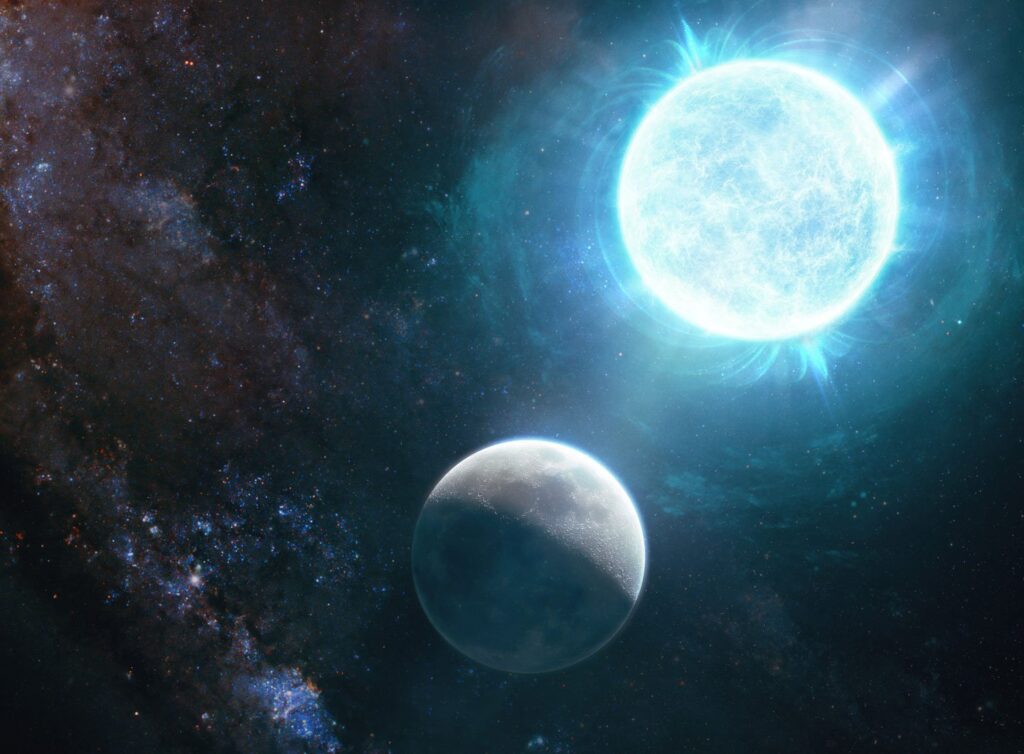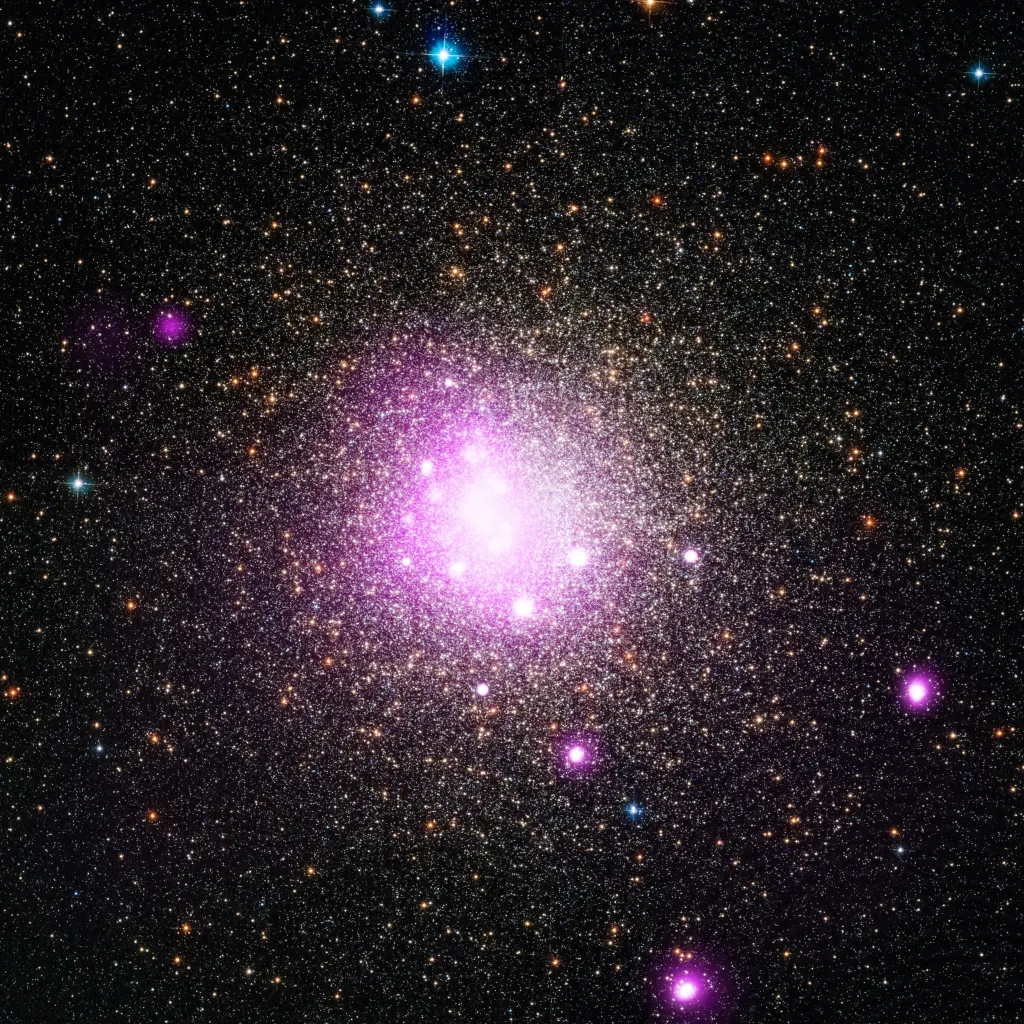When a planet spirals too close to its star, its fate depends on the star’s size and the planet’s composition. Here’s how the destruction unfolds:
1. Tidal Disruption (For Gas Giants Like WASP-12b)
- The star’s gravity stretches the planet into an elongated shape, creating intense internal friction.
- Over time, the planet’s outer layers are stripped away, forming a temporary accretion disk around the star.
- Eventually, the core is either:
- Swallowed whole (if it survives tidal forces).
- Ripped apart into fragments that rain onto the star.
2. Evaporation (For Smaller, Rocky Planets)
- Extreme radiation vaporizes the planet’s surface, creating a comet-like tail of gas (observed with HD 209458b).
- The remaining core may crash into the star or become a burnt cinder.
3. Direct Impact (Rare but Dramatic)
- If the planet’s orbit decays rapidly, it can collide intact with the star, triggering a bright flare.
- Example: In 2020, astronomers saw a white dwarf (ZTF J0139+5245) devouring a planet in a single event.
Could Earth Ever Suffer This Fate?
Thankfully, no—but here’s why:
1. Our Orbit Is Stable
- The Sun’s tidal forces on Earth are too weak to cause orbital decay.
- Earth’s distance (1 AU) is far enough that drag from the solar wind is negligible.
2. The Sun’s Future Expansion
- In ~5 billion years, the Sun will become a red giant, swelling to engulf Mercury, Venus, and possibly Earth.
- However, this is stellar evolution, not orbital decay.
3. Human-Scale Threats
- Gravitational perturbations (e.g., a rogue star passing by) could destabilize Earth’s orbit, but the odds are astronomically low.
- Artificial scenarios (like a black hole flyby) are sci-fi for now.
What’s Next in Doomed Planet Research?
- JWST’s Upcoming Targets:
- KELT-9b (hottest known exoplanet, ~4,300°C) – Is its orbit decaying even faster?
- TOI-2109b (another ultra-hot Jupiter spiraling inward).
- Detecting “Death Screams”
- When planets are torn apart, they may emit X-ray or UV flares (like ASASSN-14li, where a star was shredded by a black hole).
- Simulating Planetary Demise
- Advanced models (like SPH simulations) predict how gas giants stretch and burst before falling into stars.
Final Thought
WASP-12b’s death plunge is a preview of a violent process happening across the universe. While Earth is safe, studying these events helps us understand:
- How planetary systems evolve.
- Why hot Jupiters are rare in older star systems (many may have already fallen into their stars).

Cosmic Countdown: When Will These Doomed Exoplanets Meet Their End?
Here’s a timeline comparing the expected fates of known “doomed” exoplanets, from imminent destruction to slow decay:
| Exoplanet | Type | Current Orbit | Orbital Decay Rate | Estimated Time Left | Destruction Method |
|---|---|---|---|---|---|
| WASP-12b | Ultra-hot Jupiter | 1.09 days | ~30 ms/year | ~3 million years | Tidal disruption → consumed by star |
| Kepler-1658b | Hot Jupiter | 3.85 days | ~130 ms/year | ~2.5 million years | Spiral-in collision |
| KELT-16b | Ultra-hot Jupiter | 0.97 days | ~35 ms/year | ~1 million years | Complete tidal shredding |
| TOI-2109b | Hot Jupiter | 0.67 days | ~260 ms/year | ~700,000 years | Fastest decaying planet known |
| HD 209458b (Osiris) | Hot Jupiter | 3.5 days | Minimal decay | >100 million years | Slow evaporation → bare core |
White Dwarfs: The Exoplanet Cannibals
When stars like the Sun die, they become white dwarfs—Earth-sized stellar corpses with immense gravity. About 25-50% of white dwarfs show signs of having eaten their own planets.
How It Happens:
- Star Expands into a Red Giant (engulfs inner planets).
- Sheds Outer Layers, leaving a dense white dwarf.
- Remaining Planets’ Orbits Destabilize due to mass loss.
- Tidal Forces Tear Them Apart, creating:
- A debris disk (observed as metal pollution in the star’s spectrum).
- Infrared excess from dust (e.g., WD 1145+017, which has a disintegrating planetesimal).
Real Examples of Planet Death by White Dwarf:
- WD 1145+017: A rocky body is being vaporized in real-time, leaving a comet-like dust tail.
- G238-44: A white dwarf caught “eating” an asteroid belt and icy bodies simultaneously.
- ZTF J0139+5245: A full planetary collision observed in 2020, causing a bright flare.
Could a Surviving Planet Orbit a White Dwarf?
Yes! A few intact planets have been found orbiting white dwarfs, including:
- WD 1856+534 b: A Jupiter-sized planet that migrated inward post-red giant phase.
- MOA-2010-BLG-477L b: A planet that survived its star’s death at Earth-like distances.
These discoveries suggest some worlds endure—but their atmospheres are likely scorched relics.
What’s Next in Planetary Destruction Research?
- JWST’s White Dwarf Observations: Hunting for oxygen in debris disks (a sign of shredded Earth-like worlds).
- LSST (Vera Rubin Observatory): Expected to catch dozens of planets being engulfed by stars or white dwarfs.
- LISA (2030s): A gravitational-wave detector that could sense planets spiraling into white dwarfs.
Final Answer: The Universe Is a Violent Place
- Hot Jupiters like WASP-12b are doomed to fall into their stars.
- Smaller planets may be vaporized or frozen remnants after stellar death.
- Earth’s fate is sealed in ~5 billion years (red giant expansion), but not by orbital decay.



